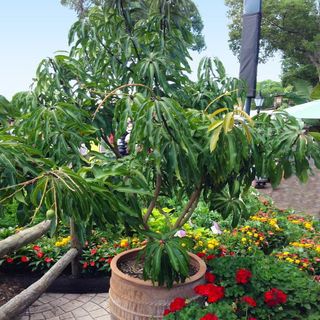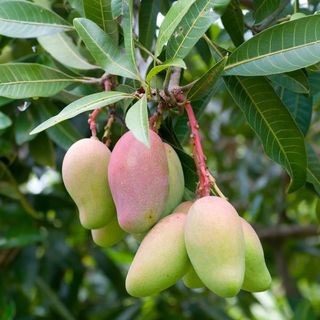How to grow mango trees – expert tips for tropical harvests at home
It will require patience if you aspire to harvest your own mangoes
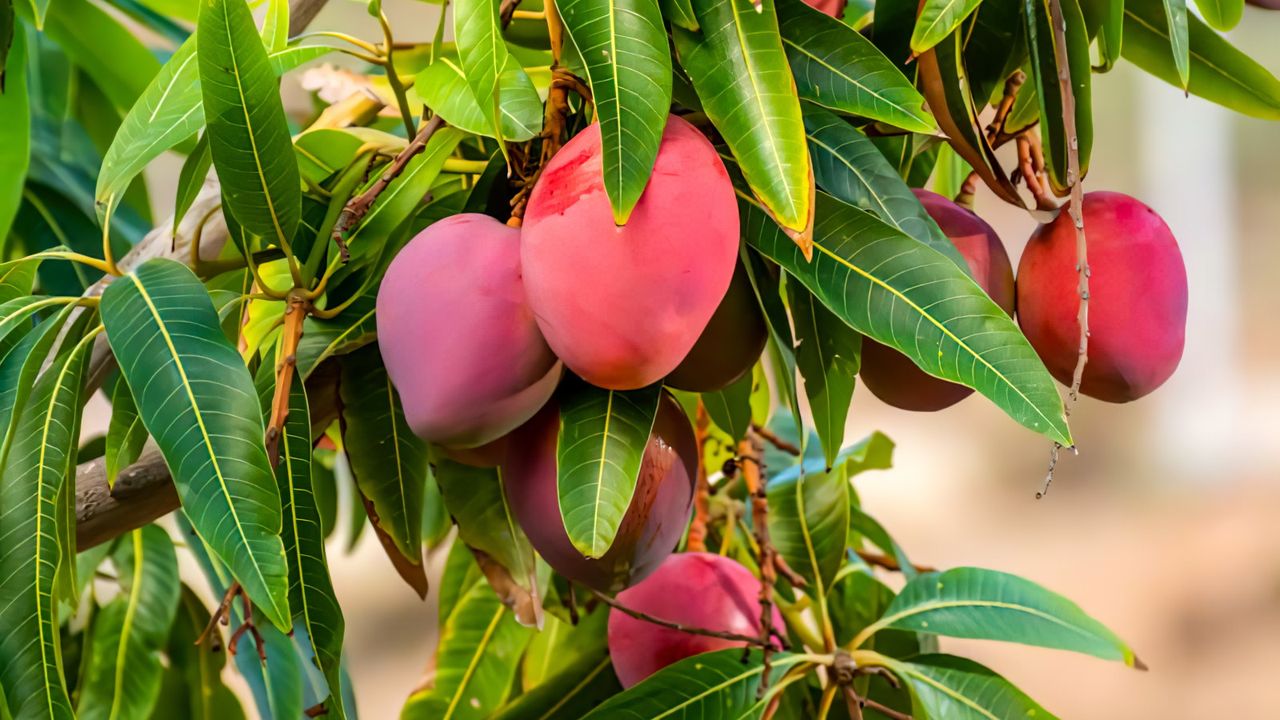

Mangoes are tropical fruit trees that can be grown at home if you can give them the correct conditions they require to thrive. This guide looks at how to grow mango trees to help you enjoy homegrown delicious, juicy mangoes.
The key to growing mango trees is to pick the right type and give the tropical trees the sunlight they need. A mango tree can thrive with regular watering, feeding, and pruning, and produce beautiful, fragrant leaves, flowers, and fruit.
Mangoes are not the easiest fruit trees to grow and not all gardeners will be fortunate enough to replicate the conditions to get them to produce fruit. If you have a warm climate, with care and patience you can enjoy the flowers and fruits. Discover how to grow mango trees and get planting and care advice from a fruit tree expert.
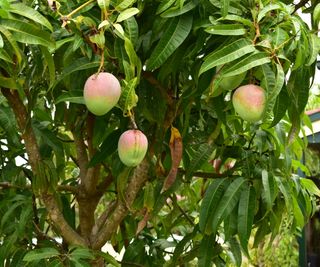
How to grow a mango tree - an expert guide
Mango trees are large evergreen trees with white flowers in winter followed by egg-shaped fruits that develop from green to orangey-red as they ripen. They are sizable and deep-rooted fruit trees with a wide trunk that can reach over 50 feet.
There are different varieties of mango trees, which vary in terms of size, hardiness, and fruit flavors. It is important to pick a variety suited to your climate and space. The choices include dwarf varieties ideal for smaller backyards, growing fruit trees in pots, or even indoors.
The advantages are that mangoes are self-pollinating, so you can get a crop with just one tree, and highly disease-resistant varieties are available.
Mango tree planting tips
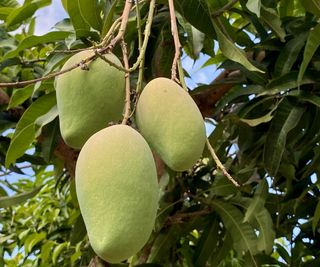
Heat and sunlight are vital factors when growing mango trees. They are commonly grown outdoors in warmer southern climates and Maureen Wright, plant expert at Fast Growing Trees, claims that mango trees can be ‘surprisingly easy to grow’ providing they are ‘given the right conditions to thrive in the correct growing zones’.
Regarding US hardiness zones, mango trees are only hardy in US Hardiness Zone 9 to US Hardiness Zone 11. They thrive in hot and tropical climates with frost-free winters. Mango trees are damaged when temperatures drop below 30°F and the flowers and fruit will fall when it gets below 40°F.
‘These tropical trees love full sunlight, so plant them in a spot where they can soak up at least 6-8 hours of direct sun daily,’ adds Maureen. ‘For soil, they prefer well-draining, sandy or loamy soil, though they can adapt to other types as long as there’s no standing water, which can cause root rot.’
Young mango trees are available to buy from specialist nurseries or online - alternatively, you can try to grow mangoes from seed if you have patience. Whether purchased or homegrown, plant the fruit trees outdoors in late spring or early summer after any risk of frost has passed and the temperatures have warmed. Mango trees can get very large - the exact size will depend on the variety - and must be given enough space to develop.
Dig a large, deep hole twice the size of the tree’s rootball and, if you have a grafted tree, plant it with the graft union 2-3 inches above the soil surface. Fill the hole in and press the soil down around the newly planted tree to remove any air pockets, before giving it a good watering.

Maureen has been a Certified Oklahoma State University Master Gardener since 2012 and is working on her ISA Arborist Certification. Her background in social work led her to an interest in horticultural therapy training and she spends a lot of her time working with at-risk youth and adults working on community garden projects.

The Keitt mango is a very popular type of mango among home gardeners. It is known for producing large fruits - up to five pounds on established trees.
Mango tree care tips
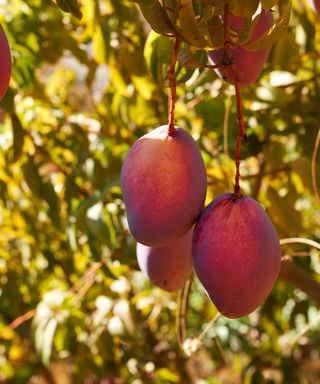
- Watering - Mango trees require regular watering when young, be sure to water plants once or twice a week for the first year. Once established, mango trees are fairly drought-tolerant fruit trees and require less watering. However, they do need watering during prolonged dry spells. Trees want consistent moisture from flowering through harvest and will benefit from infrequent deep watering rather than little and often.
- Fertilizing - Maureen Wright claims feeding mango trees is ‘key to their health and fruit production’ and advocates for mulching around trees in spring with organic compost or well-rotted manure. ‘For young trees, feed them every 1-2 months with a balanced fertilizer like 10-10-10 to promote strong root and leafy growth,’ she adds. ‘As the tree matures, reduce nitrogen and switch to fertilizers higher in phosphorus and potassium (like 5-10-10) to encourage flowering and fruiting.’ The best time to fertilize the fruit trees is in spring and any feeding should stop by midsummer.
- Pruning - Prune the fruit tree in late winter or early spring to keep a mango tree controlled, healthy, and productive. Light trimming of young trees creates a strong and balanced structure. Pruning established mango trees removes dead, damaged, or diseased branches and opens the center to improve airflow and sunlight penetration and reduce the risk of pests or diseases. It is important to use clean and sharp pruning tools and wear gloves and long sleeves as contact with mango foliage can cause some people skin irritation.
- Harvesting - Mangoes ripen in 3-5 months from flowering, depending upon the variety, and the season to pick tends to run from May to September. The color of the fruit develops as it ripens and a ripe mango will be soft to the touch. Also, a ripe mango should easily come away from the tree when pulled gently. If the stem does not snap easily, wait for the fruit to ripen further before harvesting rather than tugging - as this can damage the fruit and the tree.
FAQs
How long does it take to grow a mango tree?
It takes patience to grow a mango tree from a mango, as it takes 5-8 years from planting a seed to the mango tree yielding fruit. However, when you plant a young container-grown mango tree from a nursery it is a shorter timeframe and will usually take around four years to get the first fruit.
Can I grow a mango tree indoors?
Mangoes can be grown as indoor fruit trees. Dwarf varieties of mangoes are best suited to grow indoors, however, it can be difficult to get indoor trees to produce fruit. This is because the trees like warm, bright, and humid conditions that can be difficult to provide when growing indoors.
Plant mango trees in large pots and place them in the sunniest spot possible to ensure they get the maximum amount of warmth. Regularly watering plants in containers, feeding trees throughout the season, and misting the mango tree to help provide humidity will also help keep trees healthy and encourage fruiting.
If you have a smaller space and aspire to grow fruit in containers on a deck, patio, or balcony, then see our guide to the easiest fruit trees to grow in pots for some inspiration. Dwarf varieties of lemon, orange, fig, and peach trees are fantastic low-maintenance options for harvests of delicious fruit in container gardens.
Sign up to the Homes & Gardens newsletter
Design expertise in your inbox – from inspiring decorating ideas and beautiful celebrity homes to practical gardening advice and shopping round-ups.

Drew’s passion for gardening started with growing vegetables and salad in raised beds in a small urban terrace garden. He has worked as a professional gardener in historic gardens and specialises in growing vegetables, fruit, herbs, and cut flowers as a kitchen gardener. That passion for growing extends to being an allotmenteer, garden blogger, and producing how-to gardening guides for websites. Drew was shortlisted for the New Talent of the Year award at the 2023 Garden Media Guild Awards.
-
 I tried the Spring Cleaning Bingo Method, and it was a game-changer for a less stressful clean in my tiny home, say psychologists
I tried the Spring Cleaning Bingo Method, and it was a game-changer for a less stressful clean in my tiny home, say psychologistsIt was the motivational boost I needed to make my spring cleaning a success at home
By Rebecca Shepherd Published
-
 Walton Goggins' magical 'snug room' is one of the coziest spaces I've ever seen – it might be spring, but I am dreaming of the holiday season
Walton Goggins' magical 'snug room' is one of the coziest spaces I've ever seen – it might be spring, but I am dreaming of the holiday seasonBeautiful materials, natural finishes, and pared-back design – The White Lotus stars' home takes a warm, cozy, and calm turn
By Jennifer Ebert Published
